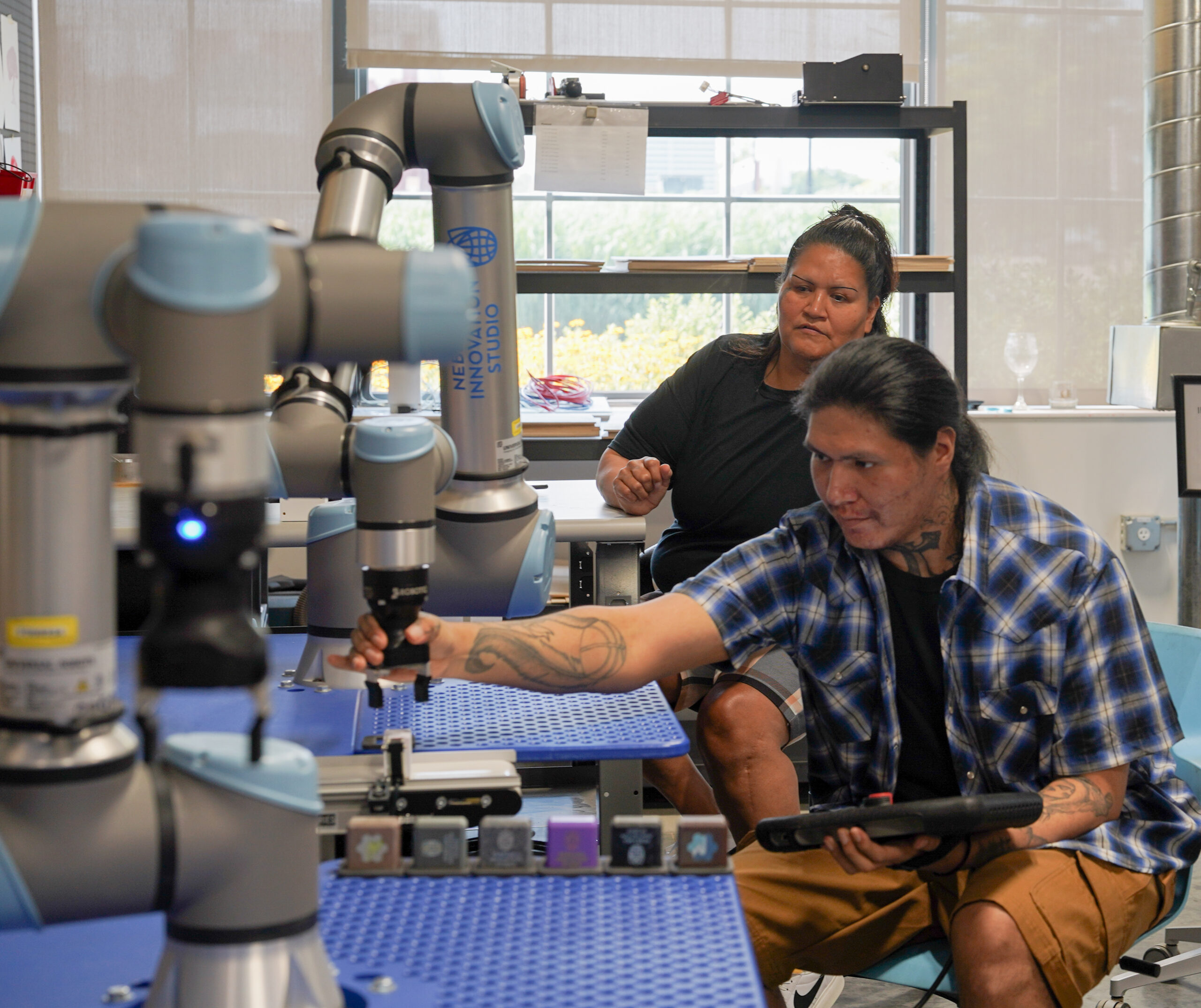A near capactiy crowd gathered at KANEKO on the night of January 14th to hear Greg Mortenson. Photo by Jordan Green.
Nearly 800 people packed into KANEKO last Friday night to listen to Nobel Peace Prize nominee Greg Mortenson speak about his education and peace efforts in Afghanistan and Pakistan. Open seats were a premium, which caused some couples to have to split up if they wanted seats. One person remarked, “It’s okay if you’re split up, you come for the ideas.”
“When it is dark enough, you can see the stars.”
– Persian Proverb
It was 1993 when Greg Mortenson stumbled into the Pakistani Village of Korphe. His clothes were dirty and ripped, and he hadn’t bathed in over 80 days. He was descending K2 after a failed attempt to summit. Mortenson had wanted to summit the fabled peak to honor his sister, Christa Mortenson, who had died the previous year. Instead, he came into Korphe, at his own end, and looked like an alien to this village’s inhabitants. He was lost, figuratively and literally. Mortenson felt like he had failed, but out of this darkness came a light.
The villagers of Korphe welcomed him and showed him compassion. While he was recovering in Korphe, Mortenson noticed the local children doing school lessons outside. They were writing in the dirt, determined to do their studies. This left a mark on Mortenson. When he was leaving, he made a promise to return to Korphe and build a school for the village’s children.
While his background may not seem like preparation for the life course he was about to embark on, Mortenson was more than ready. In his presentation, he discussed how people need to grapple with poverty. It’s an issue that cannot be solved from a think tank in Washington DC. “The only way to cure it is to taste it, touch it, be with it.” Mortenson had a first hand glimpse in Korphe of poverty, its effects on children, and it was the motivation to get him started on building a school there.
Mortenson started out his fund-raising efforts by hand typing letters to over 580 celebrities. Tom Brokaw was the only one to respond, with a $100 check. Undaunted, Mortenson persisted in his efforts. He sold his car, his climbing gear and liquidated his retirement fund. This brought him to $3800.
His mom wanted to help him out so she invited him to speak to her kids at the elementary school where she worked. Mortenson wasn’t sure how much kids could give to help his cause, but he shared with the kids nonetheless. The kids were impacted by Mortenson’s message, and responded on their own. They emptied their piggy banks, and over 62,000 pennies came in for the children in Korphe.
As Mortenson noted, it wasn’t the celebrities, heroes or adults, but rather children that helped make a difference for the children in Korphe. “Children had taken the first step in building the school, and they did it with something that is basically worthless in our society – pennies. But overseas, pennies can move mountains.” A penny in America buys nothing, but a penny in Korphe can buy a pencil. A child can then write their name. “When they can write their name, they have an identity”.
The concept of Pennies for Peace was born.
Greg Mortenson presenting at KANEKO, January 14, 2010. Photo by Jordan Green.
Back to Korphe. Mortenson returned a year later to help build the school. The construction of the school was taking longer than expected when Mortenson did something unexpected. He relinquished control of building the school to the locals. When he let go, trusted, and stopped micromanaging, the school was built in a matter of weeks. He compares this with U.S. efforts in reconstructing nations in the aftermath of past and present wars. He notes the Marshall Plan being effective because it was decentralized, and that current reconstruction efforts around the globe must be decentralized if the U.S. hopes to see long-term stability in those nations.
The school was completed in 1996, and it was the beginning of something new. Not only for the children of Korphe, but for Mortenson as well.
“We can keep dropping bombs, but unless kids get educated society will never change.”
– Greg Mortenson
Since then Mortenson has devoted his life to building schools in Afghanistan and Pakistan. He has helped establish over 170 schools, which has provided an education to over 64,000 children. 54,000 of those children are girls. The effects of Mortenson’s efforts have had a positive impact throughout Afghanistan and Pakistan. And yet, Mortenson would tell you of the 120 million children in the world are not in school, with over 70 million of them being girls. He stresses that education has to be our top national and international priority, including education for girls.
“Educate a boy, you educate an individual. Educate a girl, you educate a community.”
– Greg Mortenson
Statistics bear this out that when you educate girls it reduces infant mortality, controls the population explosion and improves the basic quality of life. As well, an educated mother is less likely to condone her child getting into violence and gangs. This is key in Afghanistan and Pakistan.
It’s here where Mortenson’s work has caught the attention of the U.S. military. Despite speaking out against the current war on terrorism, Mortenson has consulted and worked with the U.S. military on its efforts in Afghanistan and Pakistan. He’s met with leaders, such as General David Petraeus, that recognize the U.S. military needs to engage the people in these countries on a more personal level. They understand the U.S. cannot afford to continue to act in an arrogant manner in dealing with the world. As Mortenson quoted a message he received from a military leader, “I am convinced the long-term solution to terrorism is education.”

Greg Mortenson presenting at KANEKO, January 14, 2010. Photo by Jordan Green.
When children grow up in these cultures where they are thrust into war at an early age, they don’t know any better when they grow old. It’s why Mortenson sees it as vital to champion education amongst the children of Afghanistan and Pakistan, and why the Taliban is doing what it can to thwart Mortenson’s efforts. Since 2007, the Taliban, and other similar groups, have shut down or destroyed over 2,400 schools. Many of these being girls schools. Why does the Taliban fear girls? “Educate a girl, you educate a community.” The future of these countries is at stake.
“Ask any woman in rural Afghanistan or Pakistan what they want, they’d say we don’t want our babies to die and we want our kids to go to school.”
– Greg Mortenson
Mortenson’s experiences, history and statistics show there is a better way to fight the war on terror than just simply dropping bombs. He has done more to combat terrorism in these countries than many would think possible. More importantly, he’s done it through peaceful means, building schools, and establishing personal relationships with locals.
It all started out of an apparent failure. Yet, here he is 15 years later talking to warlords about building schools for girls. What causes a hardened warlord to do this? The sight of a school playground, children playing and laughing, and this warlord being reminded of what it was like to be a child.
Mortenson said all it would take to eradicate the education inadequacy is $6 billion dollars, every year, for the next 12 years. ($72 billion dollars.) Now, that’s not a check anyone can write, but if education was a top international priority, couldn’t the United States and other world governments help fund this? In 2010, the United States spent over $660 billion dollars on defense spending. If Mortenson is spreading peace and countering terrorism through his proven efforts, isn’t it worth the military to invest 1% of defense spending on “fighting terrorism” through Mortenson’s version of spreading peace and education?
“If God is on anyone’s side, it’s on the side of widows, orphans, refugees.”
– Greg Mortenson
The challenge is to us. What can we do? Using Mortenson’s life as an example (he is also the co-founder and director of the Central Asia Institute), one person can do a lot to change the world. Mortenson talked about Pennies for Peace and how kids collecting pennies have helped change the world. Currently, 4,500 schools partner with the organization. Through it, kids realize there is another world out there besides their own. It engages them with other people groups and cultures. Kids have been inspired to do their own fund-raisers. He shared the story of Zach Bonner. As a kid, he saw homeless kids in his hometown of Tampa, Florida. He started the Little Red Wagon Foundation and decided to walk from Tampa to Washington DC to raise awareness for the homeless. He raised $78,000. He then decided to walk across the United States, and raised $1 million dollars for homeless.
One boy in Tampa. One man in Korphe. One person can bring about change.
“We can’t say God is on our side, when there is still work to do.”
– Greg Mortenson





